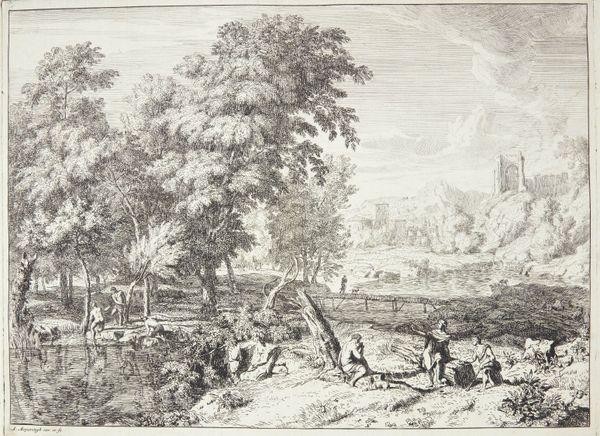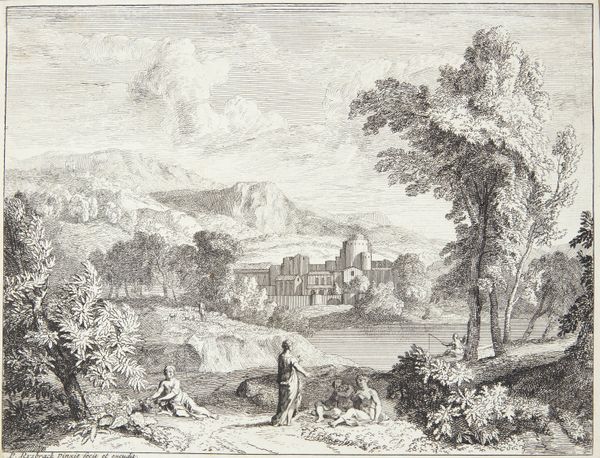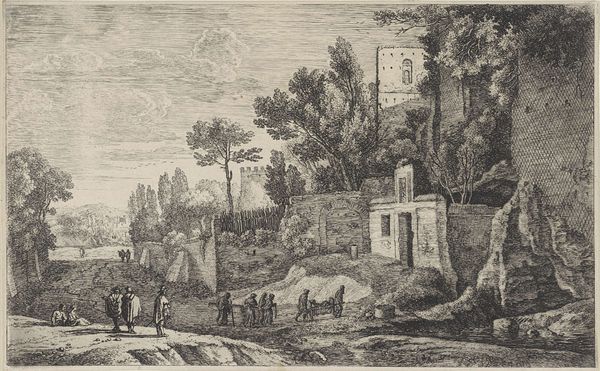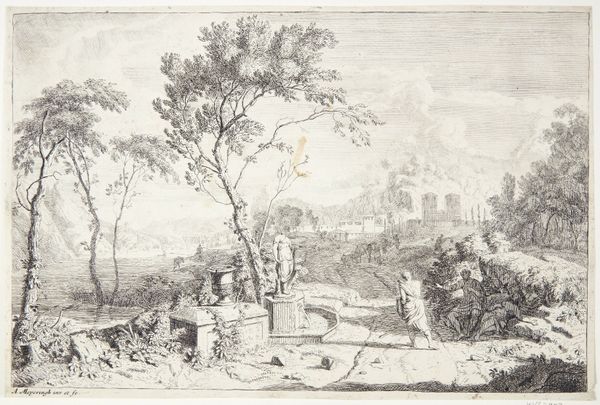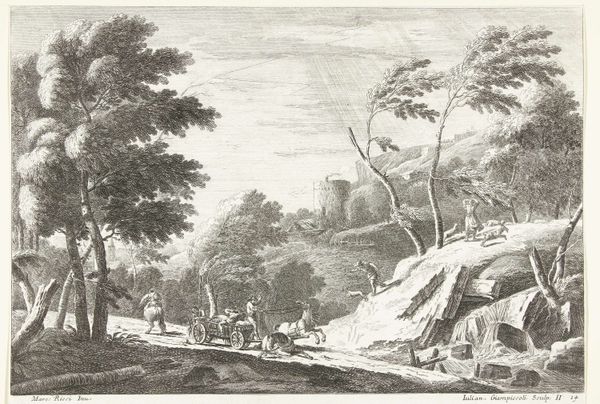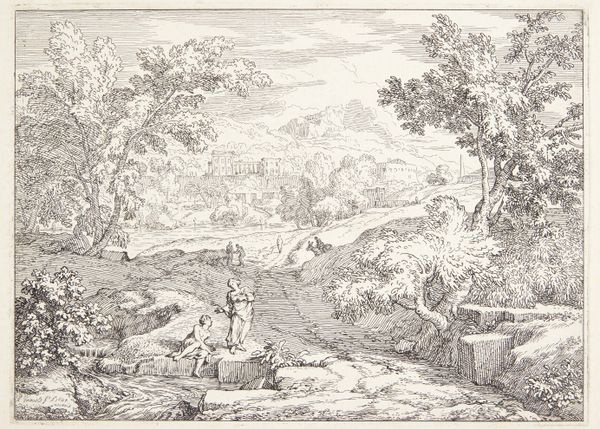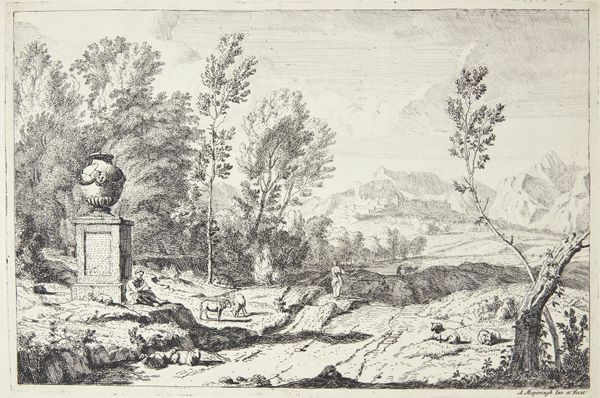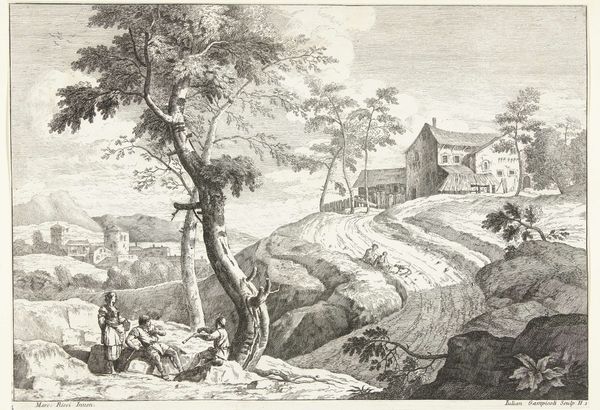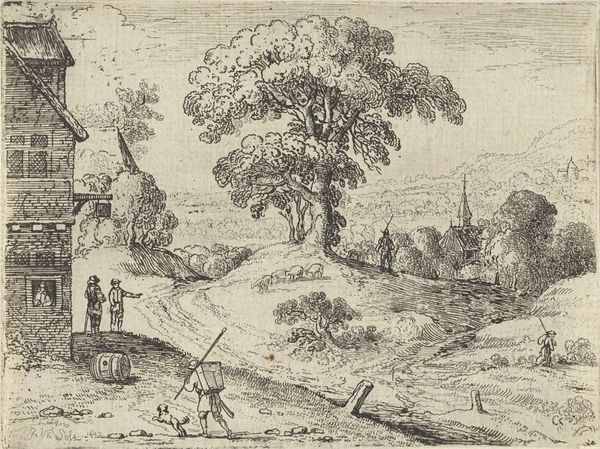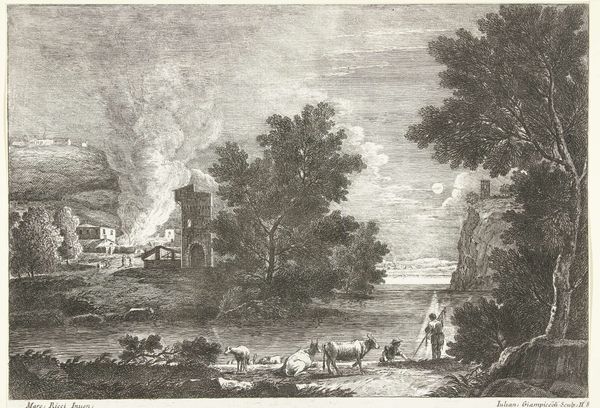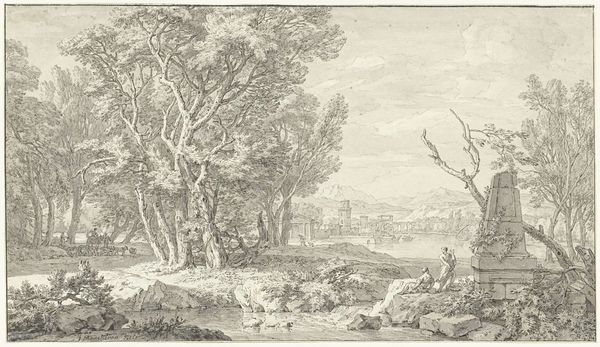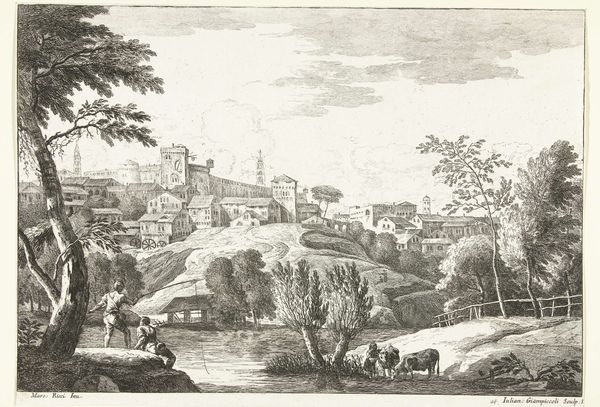
Mennesker på en flodbred, i baggrunden et kloster 1655 - 1729
0:00
0:00
print, etching, ink
#
ink drawing
#
baroque
# print
#
etching
#
landscape
#
ink
Dimensions: 164 mm (height) x 217 mm (width) (bladmaal)
Curator: Let’s examine Pieter Rijsbraeck’s "Mennesker på en flodbred, i baggrunden et kloster", likely created sometime between 1655 and 1729. This piece, currently held at the SMK, employs etching on an ink drawing to realize its baroque landscape. Editor: Ah, instantly, I get this shimmering, idyllic sensation—like watching a half-remembered dream. All those soft lines and gradations—it's almost ethereal. And that strange light breaking through the clouds! Curator: Observe how the artist orchestrates a visual dialogue between the foreground figures and the architectural form of the monastery in the background. Note the positioning of the figures along the riverbank, forming a carefully constructed arc, and how that relates spatially to the rigid geometry of the architecture across the water. Editor: The balance of it, yeah. But there's this playful contrast, isn’t there? The group on the left feels alive, fluid even. And opposite, that figure reclining, practically dissolves back into the earth. The monastery looms there, static and… well, kind of judgmental looking! Is it a scene of quiet contemplation or something else? Curator: One could argue that the light serves as a semiotic marker, a point of divine intervention within the terrestrial landscape. Its diffusion acts not only to illuminate the scene but also to structure a visual hierarchy, emphasizing the monastic presence. The light guides our reading. Editor: Hmm, maybe, maybe not. It seems the people in the scene are hardly even noticing the cathedral—their bodies aren’t oriented towards the light or the monastery at all! Rijsbraeck is highlighting the ordinary here; maybe it’s not some grand moral lesson, you know? Maybe, the divine shows itself in simple existence? I'd love to linger here and invent a story about everyone on the riverbank... Curator: An understandable impulse! Nonetheless, formal examination invites a nuanced interpretation—one attuned to the interplay between form and implied content. Editor: Well, thank you, Pieter Rijsbraeck, for giving us a place for reflection! This etching is proof that landscapes aren’t just pretty scenes; they're little mirrors reflecting human wonder and human doubt. Curator: Indeed. The convergence of technical skill and artistic intention creates a layered viewing experience, rewarding careful examination.
Comments
No comments
Be the first to comment and join the conversation on the ultimate creative platform.
